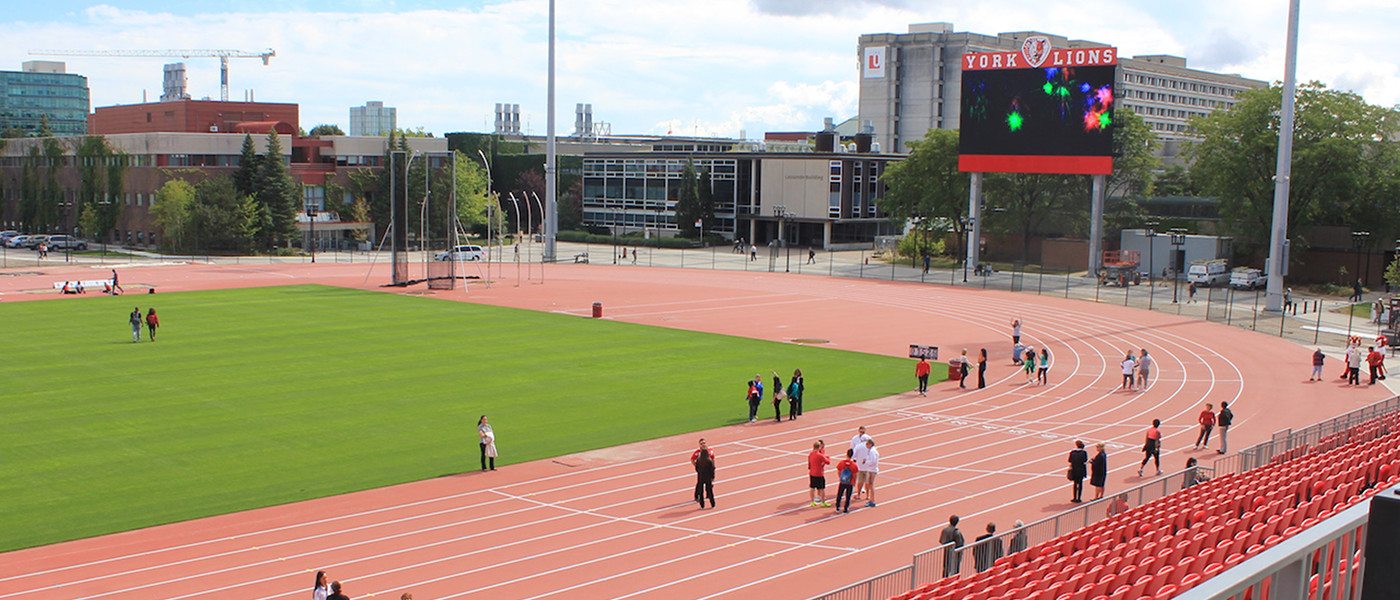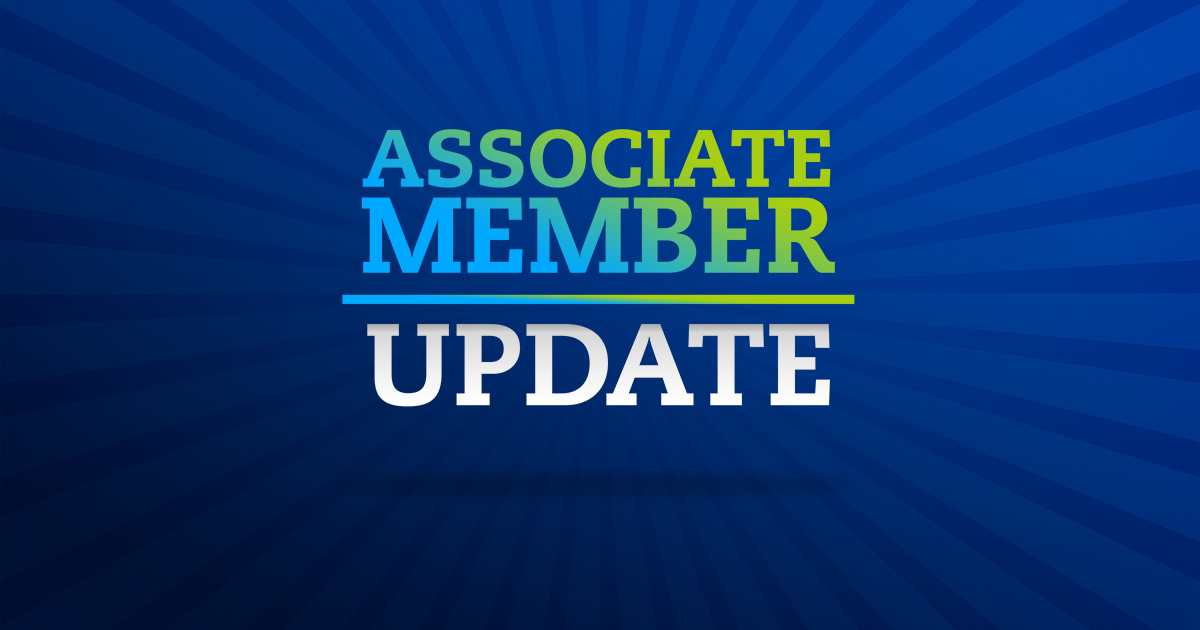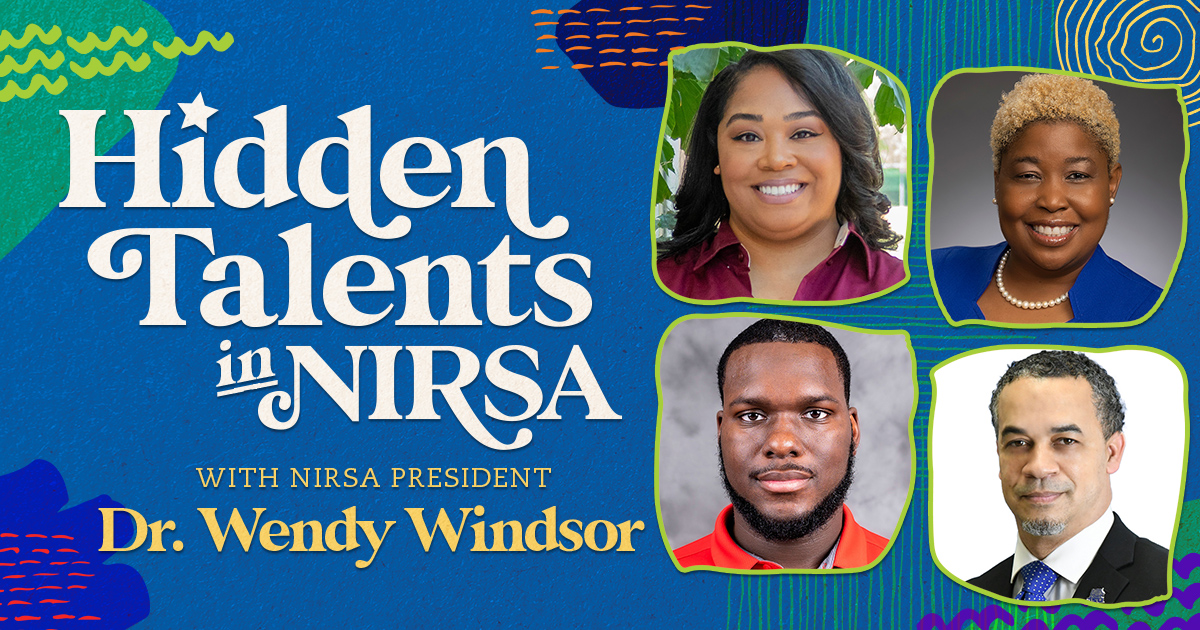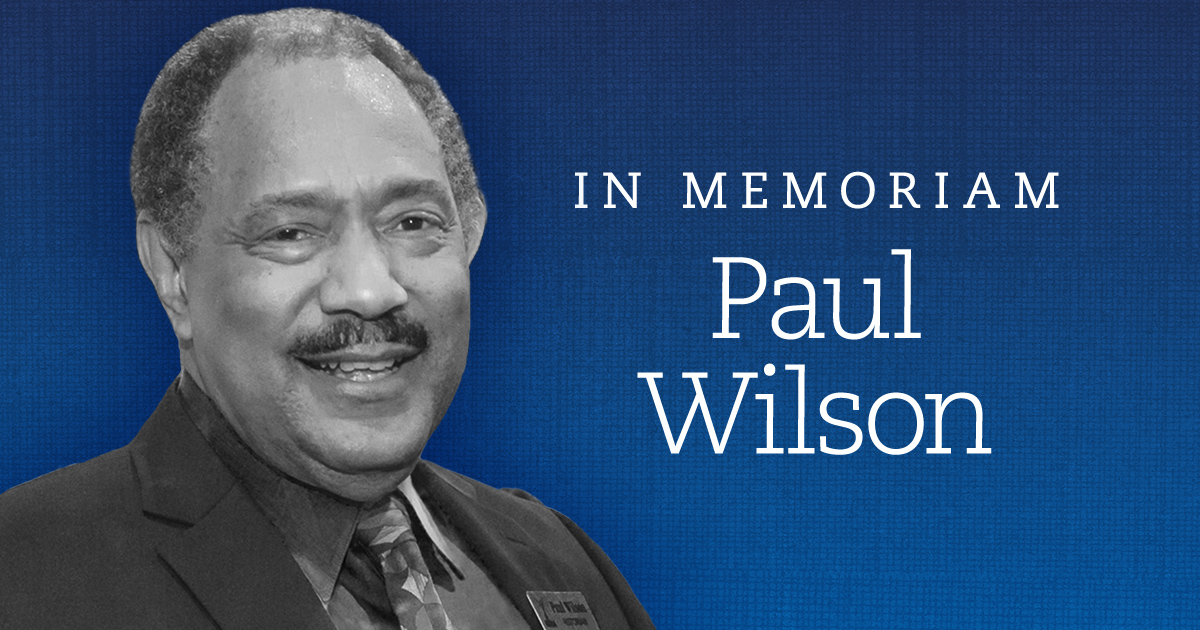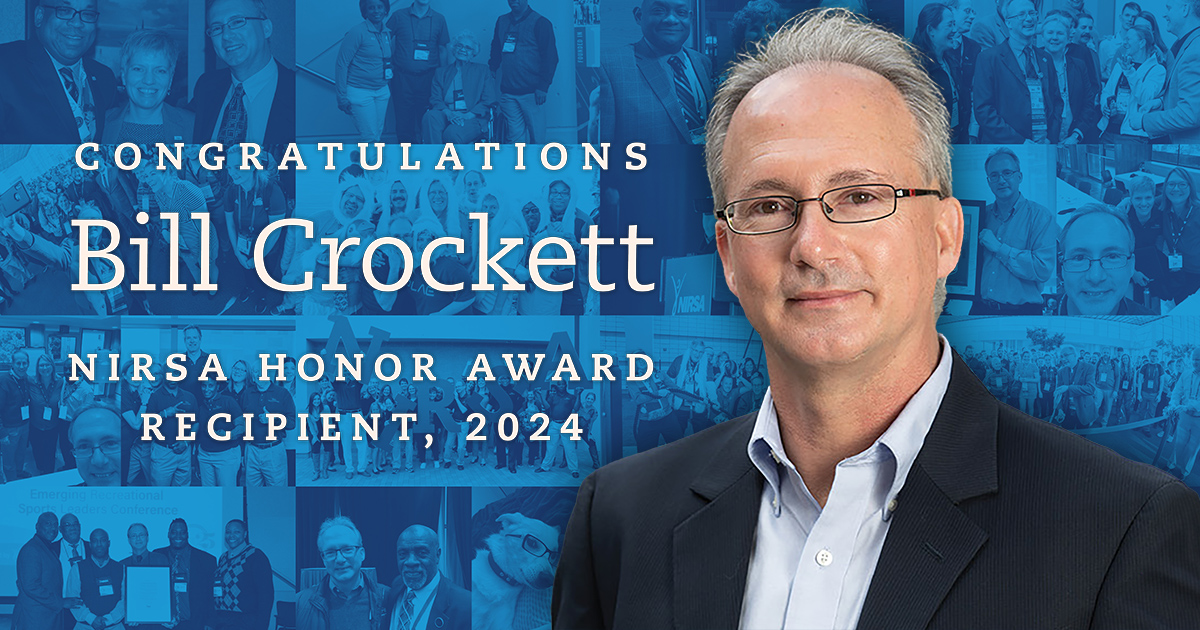Colleges and universities across North America are playing a leading role promoting health and wellbeing among their students and even into their communities. York University in Toronto, Ontario is having an impact on the fitness and lifestyle of more than just its students. Serving 53,000 students, York University is the third largest school in Canada and the campus recreation professionals there are finding innovative ways to extend their influence beyond campus borders.
In 2015, its Athletics & Recreation department underwent an organizational restructure to create three new manager roles and five administrative coordinator positions. They now have specific managers for the areas of Fitness & Lifestyle; Recreation Programs including Aquatics, first aid, camps, and Sport Clubs; and Intramural Sports.
“The restructure allowed us to concentrate the programming in the proper areas and provide strategic oversight to ensure sustainability and growth,” explains Peter Mumford, Associate Director of Campus Recreation.
One exciting result of this new focus is a partnership between Fitness & Lifestyle and the Canadian Diabetes Association to create the Gluco-Fit Project, an innovative pairing of campus rec resources and the off-campus Toronto community.
Broadening the reach of campus wellness
The Gluco-Fit Project was focused on providing a service for disease prevention or management of type 2 diabetes or pre-diabetes, a disease that can often be managed with an individual’s lifestyle choices and without the need for daily medication. The idea for the program was conceived because the North York Community around York University has some of the highest prevalence of type-2 diabetes and pre-diabetes in Ontario.
“Positive lifestyle choices around physical activity and eating well can prevent the disease and/or manage it if someone has already been diagnosed with type-2 diabetes,” explains Andy Hvizd, Manager of Fitness & Lifestyles at York University. “We have a kinesiology program at York University and a very strong personal training team, so we saw it as an opportunity to make a positive impact in the community.”The target audience for Gluco-Fit focused on those who were part of the off-campus community, rather than students.
“We were looking to engage the external community members and bring them onto our campus and provide a service that they could benefit from,” says Andy. “We wanted to not only offer students and faculty/staff the opportunity to live an active lifestyle but also wanted to offer opportunities for those people that lived in the community around the university.”
It took only ten months from the inception of the idea to its execution after receiving a grant through the Ontario Sport Recreation Communities Fund. They applied for the grant in January 2016, received notice in May that they had been approved for funds, and kicked off the program in September 2016.

A collaborative and integrated approach
Collegiate recreation professionals have a penchant for effective collaboration, so it comes as no surprise that Andy and his team recognized early on that they would need strategic partners for the project to be successful.
“We reached out to the Canadian Diabetes Association, Black Creek Community Health Centre, and the Jane and Finch Family Health Team,” he says. “These community partnerships made it possible to build relationships and credibility for Gluco-Fit.”
Jane and Finch Family Health Team and Black Creek Community Health Centre are both off-campus clinics that are frequented by community members for regular health care as well as diabetes management. Both clinics acted as a referral network with medical professionals in the community completing a field screening to see if their patients were potential candidates for the Gluco-Fit Project.
“Although the program was free, we knew we would have a challenge recruiting eligible participants,” explains Andy. “Our partnership with the Jane and Finch Family Health Team and the Black Creek Community Health Centre connected us with program participants and gave the Gluco-Fit Project a level of credibility by being associated with these two community organizations.”
The Gluco-Fit team also utilized a campus partnership with Professor Rebecca Gunter of the Kinesiology Department at York University, who helped provide students and resources to assist with data collection and behavior change counselling. In this way, Gluco-Fit wasn’t just benefitting the greater Ontario community; it offered students a meaningful subject for the focus of research projects at both the graduate and an undergraduate levels.
“On top of the research positions, the program also allowed for a student leadership position to be created within the fitness and lifestyles team. The role allowed the student to work independently on running a pilot program, problem solving, assisting in obtaining the partnerships as a liaison for both parties, and helping participants and trainers when there were questions and concerns,” says Andy
Getting Gluco-Fit
At its core, Andy and his team developed a preprogrammed exercise prescription for all participants so the program was consistent between participants and followed exercise recommendations for those with type-2 diabetes.
“Our focus was on developing a progressive exercise program,” explains Andy. “Many of the participants had never lived an active lifestyle, and we were asking them to commit to a structured workout two times per week for three months. It’s an extreme change from never stepping foot in a gym to coming to campus and working out among university-age people.” But—as NIRSA members well know—where there is challenge there is opportunity.
Each session consisted of three to four strength training blocks that included three to four exercises each. Between each strength block, the participant would complete 10 minutes of light cardiovascular exercise. In total, each session lasted an hour.
“We wanted to offer participants a barrier free, inclusive and non-intimidating environment to live an active and healthy lifestyle,” says Andy. “For many of these participants just coming to work out and meet with a trainer was a huge accomplishment in itself.”
But, one significant obstacle to accessibility was that many of the Gluco-Fit participants had never been on campus before.
“We minimized any barriers associated with accessing the building and ensured our staff had the necessary skills and resources to make it the best experience possible,” he says. “We knew that finding the fitness center and navigating campus could be an obstacle. Knowing this, we sent every participant a welcome email or called them so they had directions, a bus schedule, and knew which route to take to be dropped off directly in front of our building.”
Another aspect of ensuring the accessibility of the program was eliminating fees for participants. Funding from the grant covered the personal training component, a nine-month membership to Tait McKenzie Fitness Centre, and all additional support services, including the behavioral change counseling.
“We knew that we could not offer a three-month program where participants were meeting twice a week with a personal trainer and then completely cut them off after the program,” says Andy. “Once they completed the three months of training they were connected with one of the behavior change counsellors who worked with them bi-weekly to develop an action plan and discuss any obstacles or setbacks.”
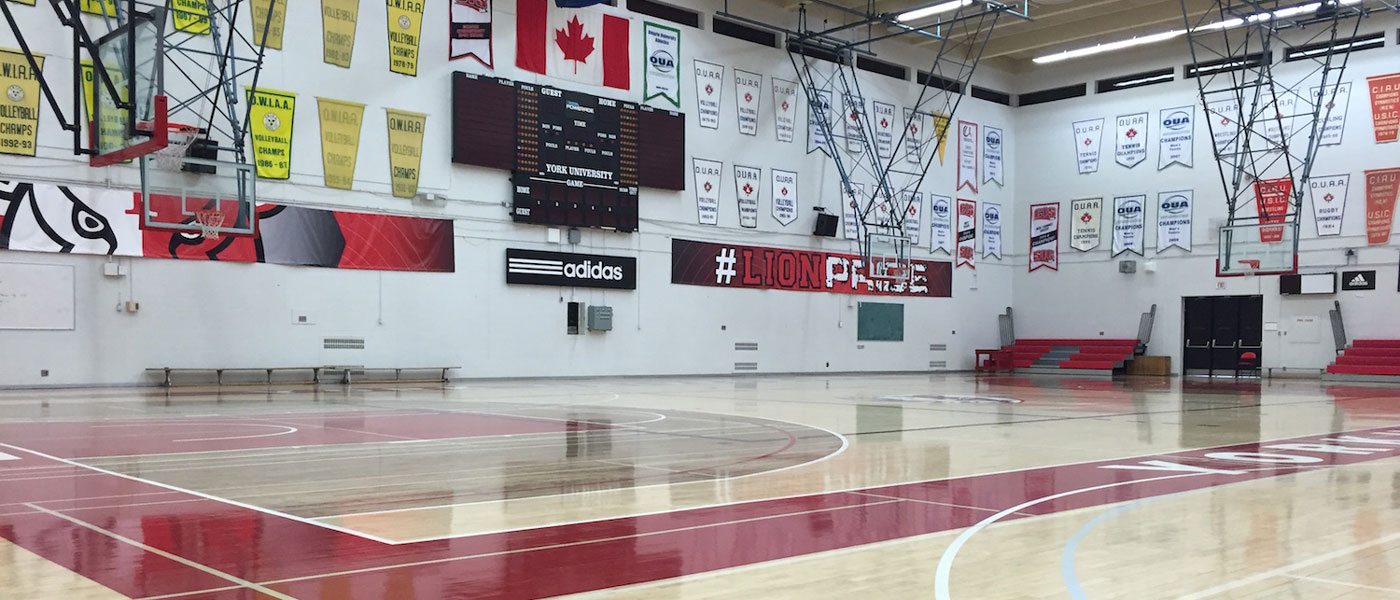
Measuring success
The expected outcomes of the project were initially projected to yield improvements in the participants HbA1c, which is the measurement of the level of glucose in the blood over a three-month period and the clinical diagnosis for type 2 diabetes and pre-diabetes. A HbA1c of 6.5 percent or higher is considered the threshold for a type-2 diabetes diagnosis while a HbA1c of 6.0–6.4 percent is considered pre-diabetic.
For those with type-2 diabetics in the Gluco-Fit Project, the goal was to help them maintain or achieve “good” blood sugar control which is a HbA1c of 7–7.5 percent. Those with pre-diabetes can reverse this clinical diagnosis with physical activity and a proper diet, so the Gluco-Fit Project’s goal for these participants was to get their HbA1c under 6 percent.
However, the success of Gluco-Fit cannot only be measured in blood sugar.
“Running the program and seeing the participants engage with their student personal trainers and begin developing a connection to the university and specifically athletics and recreation made it clear that this program was more than just about achieving ‘health’ numbers,” says Andy.
One example of this is the connection Travis, one of the student personal trainers, made with a participant who is in his sixties.
“One day I saw Travis training his client during their hour session and then I saw them downstairs playing ping pong. Later, I saw them in the student union having lunch together,” says Andy. “I asked Travis about their day and he told me that he and this client really enjoyed their time together and it became a friendship. Travis was not paid extra for his time; he just did it because he made a connection with the client and they shared similar interests.”
Andy says Travis’s client hadn’t ever visited campus before beginning Gluco-Fit, “and yet he is now spending his Saturday mornings on campus being active and engaging with the student community.”
“The gentlemen also introduced his wife to the fitness center and she purchased a membership and began working out when he had training sessions with Travis. I would see the client and his wife playing ping pong as well!” he adds.
Another individual started Gluco-Fit requiring the use of the elevator because she physically was not able to climb the stairs. After going through the program, she was no longer using the elevator and became capable of going up and down four flights of stairs to use the fitness center.
“She said her daily activities became easier and she restarted hobbies that she once use to do but had to stop because she lacked energy,” says Andy. “We believe this program had a big impact on the community members who engaged with it.”
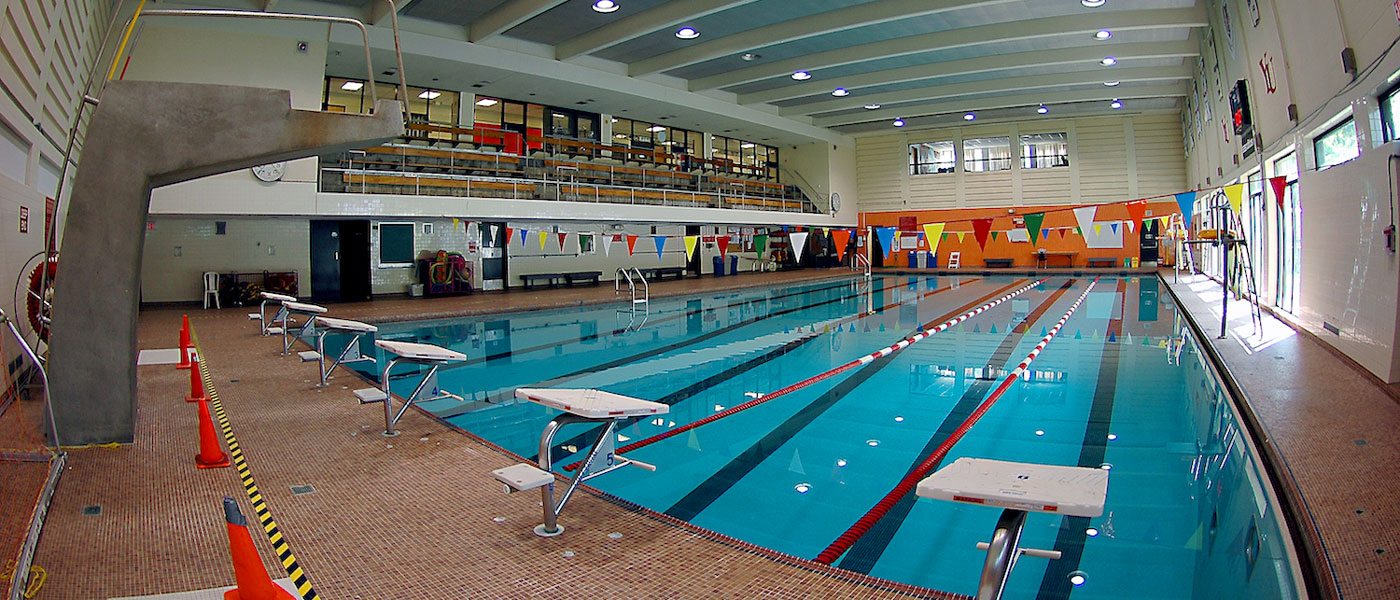
Lessons for NIRSA colleagues
As someone who became involved in recreation as a university student, Andy understands the pivotal role recreation plays in student development.
“Over a four-year span, campus recreation had one of the greatest impacts on my university career, and I knew I always wanted to come back to the university environment as a professional,” he says.
While the Gluco-Fit Project targeted the off-campus community, students also benefited from exposure to a diverse population at the fitness center. Student employees were given an opportunity to make connections and gain practical leadership experience with a different demographic than they ordinarily worked with.
“I saw how humble the student staff were in regards to the success that their clients had and the amount of impact that they were having in the community,” says Andy. “I think it’s important to recognize the impact that they are making and the opportunity to highlight this experience on resumes and in job interviews as they graduate and begin their careers.”
The Gluco-Fit Project was also a prime example of the expansive possibilities created through collaboration, a skill highlighted in both the profession and through NIRSA’s encouragement of networking and engagement to affect the health and wellbeing of sustainable communities.
“It opened my eyes to the power of partnerships both on and off campus. I would encourage fellow campuses to search out those innovative external partnerships and leverage them to make a larger impact in the community,” Andy advises.
Though the Gluco-Fit Project did not receive funding for the 2017-2018 year, it is only on hold until additional funding can be secured. In the meantime, the Fitness & Lifestyle Department has plenty of other things to stay busy with including participating on a sub-committee for the University Mental Health Wellness Strategy and working on multiple committees on campus to discuss the importance of physical activity. They recognize that the fitness center is a main hub on campus and it’s important to be an inclusive environment where students and community members alike can learn to live a healthy and active lifestyle that benefits them both emotionally and physically.
- For more information about York University’s Gluco-Fit project, contact Manager of Fitness & Lifestyles, Andy Hvizd .
- If you are interested in highlighting your campus or a NIRSA member’s achievements on your campus, pitch us your ideas.
Sarah Kosch is a Communications Specialist at NIRSA.


